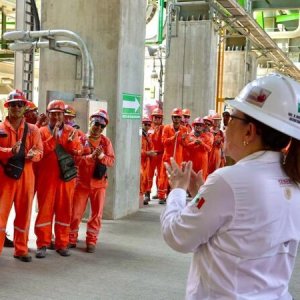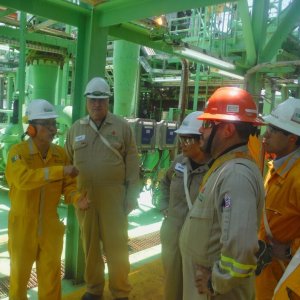Easing the Transition into Mexico

STORY INLINE POST
Q: What is IHS Energy’s main competitive advantage, and how have you harnessed this in the changing face of the energy landscape?
A: IHS Energy has the most advanced global databases available on upstream project development and on basins around the world. We have also developed state-of-theart models for cost analysis. These tools allow companies and governments to understand what it will take to be competitive in any particular marketplace. Through our office in Mexico, we have a direct relationship with companies interested in the country, and also with key decision makers in the government at the federal, state, and local levels. This allows us to understand not just the traditional technical issues in energy, but also many of the above-ground risks that affect the viability of energy projects.
Here in Mexico, our most requested services include a combination of technical and policy insights in analyzing the resource potential of Mexico’s oil and gas sector, the cost for development, and the competitiveness of those resources. We have also had requests to help companies understand above-ground risks, which are the political, regulatory, and economic factors and can affect the viability of a project. As a result, we have spent extensive time meeting with and understanding the interests of critical players in the government at a federal level and establishing contacts at a state and local level.
Q: What are the benefits for your clients of working with a company that provides both data and consulting services?
A: IHS has established data exchange relationships with companies all around the world, and by using the technical and cost data provided to us by these companies, we are able to develop models that help them analyze data more efficiently. To do so, we receive company data on individual countries, but also cost data and technical information on the basins our clients are developing globally. We then analyze that data and help them better process it, and customers are able to update their information in our database bi-annually. We then make the data available to companies in a way that is easily accessible, and we present it in a format that allows them make comparisons. We have developed software capabilities in four main areas: Technical, Energy Analytic Insights, Engineering & Geoscience, and Consulting. In each of these areas we have a number of different software products and reports that can help companies better understand the Mexican environment. We work with companies in each of these areas in order to develop the package of resources that best suits their business requirements.
Q: How has the insecurity in hydrocarbon-rich regions impacted the entry or operations of IOCs in Mexico?
A: For most companies, security issues have not been the dominant factor affecting their investment decisions at this stage in Mexico, especially for offshore projects. There are a number of things that can be done at a federal and state level to help address issues related to organized crime and to facilitate relationships with unions and ejidatarios. The wider development of onshore resources, especially unconventional or shale, will entail different types of challenges. It will be necessary for the Mexican government to work together with companies to develop strategies that provide a local source of security that can respond rapidly with accessible protection. It is fair to say that each company will have to make a security investment, but what is truly needed is a security umbrella provided by the government. Companies could then make localized investments to support or reinforce that.
Q: What are the main challenges national companies will face in becoming operators?
A: Around the world, two of the greatest challenges for any company are quality control and standardization. Companies must be able to deliver a quality product on a consistent basis in order to attract and sustain contracts and partnership. IHS has the capacity and experience to help companies develop these skills. Having spoken to some of these local firms, they are fully aware of this challenge and are committed to developing their capabilities to reach that goal. In the matter of standardization, companies will have to ensure that the standards they pursue are congruent with both Mexican and international expectations. One way to cut costs is to use standardized procedures, services, and equipment in many different parts of the world. A significant challenge for Mexican companies as they seek to become operators will be to demonstrate that they are able to do so in a way that conforms to international practice.
The key for us is to help companies entering the country to be competitive. The first stage is to help them understand the Mexican marketplace and the requirements for competing with other players. We also help companies better understand the supply chain so that, if they get a contract, they know which Mexican companies they can work with. Finally, we provide companies with consulting and advisory services on how to operate efficiently in Mexico in terms of land access, security, and environmental questions. This knowledge allows companies to stick to schedules and, thus, reduce their costs.
Q: What are the main challenges in the Mexican oil and gas sector in terms of above-ground risk, and how can IHS Energy help in overcoming them?
A: The first set of issues that companies are trying to understand is how competitive the offerings in Mexico are, in comparison with other investment opportunities around the world. In order to do so, they are analyzing the fiscal terms established here, the quality of resources on offer, and the materiality, meaning the scale and size, of these resources. We have also spent time discussing this with key players in the Mexican government so they can better grasp the perspective of foreign companies as they are assessing the investment opportunities.
Q: What are your priorities for 2016, and how do you plan on achieving them?
A: We have three main priorities. The first is to maintain the most comprehensive analysis software of any company in the world. The second challenge is to understand the changing nature of technology and how this impacts the costs of production and the available resources on the marketplace. We are in constant discussion with technology providers to understand the influence of recent developments, price reductions in the financial world, and the willingness of financial institutions to continue to make investments in technological developments.
The third challenge is to understand the competitiveness of individual resource basins and to develop the skills and the capabilities necessary to help companies effectively develop their proposals and projects in important areas. We believe the potential here is exceptionally high, and that it will take strong competitive terms from the Mexican government to attract international investment and thoughtful, cost-effective proposals from companies to ensure they can work effectively in Mexico.
























